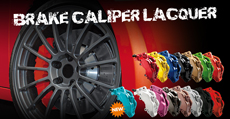|
|
ALIGNMENT SETTINGS - WHAT ARE THE BEST ONES?
The simple answer is that there is no such thing!
I know we have probably given more information here than most people wanted, but even this only scratches the surface of the available information and variables that need to be considered when contemplating optimum wheel alignment settings.
The most important thing and something we can not stress enough is the fact that alignment settings are NOT an "absolute truth" that can be held up as an undisputed rule. It is a dynamic process with the "correct value" varying from driver to driver, car to car not to mention the driving environment.
DYNAMIC & STATIC – WHAT ARE YOU TALKING ABOUT?
Typically used when discussing wheel alignment and geometry. By this, Whiteline are referring to the difference in alignment angles between a stationary and a moving vehicle. That is, the same vehicle will typically have different caster, camber and toe readings when it is moving compared to when the alignment was done in static form in the workshop.
In an ideal world, all wheel alignments would be done on a dynamic wheel aligner but these are expensive and quite rare. This concept is very important, as the only suspension angles that really matter are those present while the vehicle is moving (dynamic). What is done to the vehicle’s alignment while the vehicle is stationary, (static) is a process of trying to predict the levels of change while the vehicle is moving and setting the angles according to these predictions.
Whiteline puts a great deal of emphasis on the dynamic geometry so rigorous road testing is essential to ensure that the predictions are valid.
- Camber
- Caster
- Toe
- "Anti" Geometry
- Whiteline Jim – Alignment Q&A.
|





